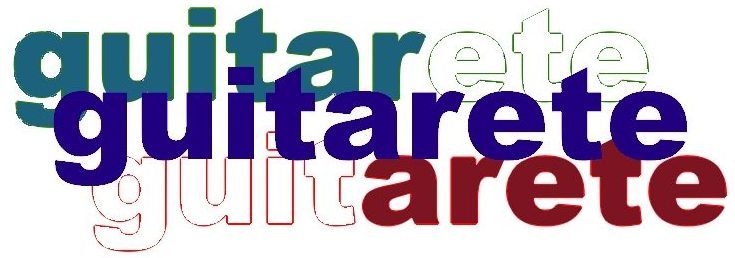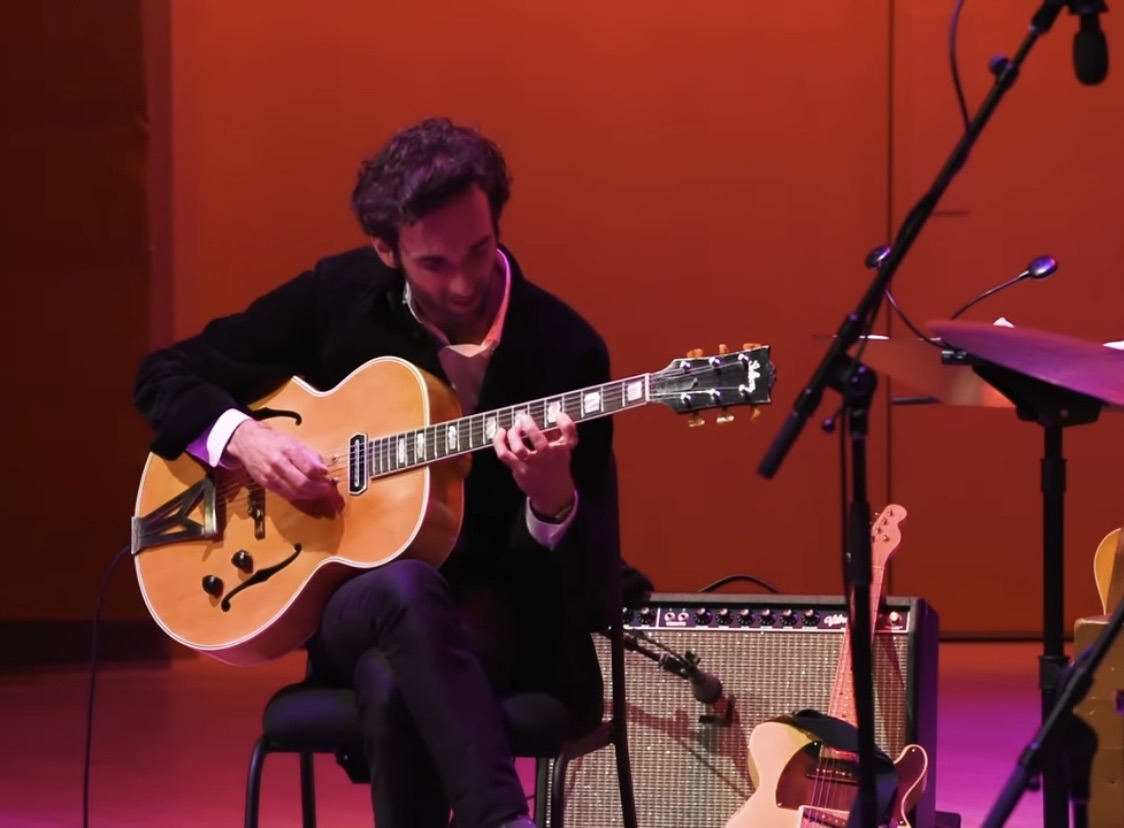I’ve seen more than a few jazz guitar trios, but I don’t think I’ve ever heard one play a Charlie Christian tune. If I had to guess why, I’d suggest it’s because Charlie Christian’s music was so deeply embedded in the swing ethos of Benny Goodman’s bands that it might not translate to more modern, stripped down instrumentation.
Julian Lage, however, shatters my speculation. Check out this performance of “Seven Come Eleven,” from September 2022, at the very cool- looking Musical Instrument Museum, in Phoenix, AZ, during which he plays Christian’s very well-preserved Gibson ES-250:
There’s so much great stuff going on in this rendition!
- The extended intro is both gentle and modern. At about 1:46, Julian builds melodic hints of the tune’s head over a repeating, dynamically rising-and-falling major second, after which he braids together a helix of bass line, chord fragments, and melody that lead into the familiar head.
- He lends a bluesiness to the head that situates the tune well in the trio format.
- To my ear, Julian’s solo manifests influences of both Charlie Christian and Benny Goodman. For example, in his entrance at 4:21, I hear an echo of the slide-and-vibrato of Charlie as he accelerates into the bridge of the original (1:01 of the original version, below). Some of his pedal tone phrases and triplet ornamentations remind me more Benny Goodman’s clarinet solo than the lines Charlie Christian plays on the original.
- Julian’s chord-soloing is mind-blowing–and yet, at one point, it includes a move as simple as just chromatically running a chord shape down the neck. It’s all about what simple move can work and when it fits, I guess–although knowing that is no bonehead thing!
- It’s certainly cool that one of today’s jazz guitar heavyweights got a chance to play the actual guitar of one the foundational jazz guitar originators. The historical line between Charlie Christian and Julian Lage is not all that direct, but it’s still plenty worth placing some attention on the thread that connects relatively early jazz to the music of today. I wouldn’t be surprised at all if Julian could honor Charlie Christian by playing one of Charlie’s tunes on the Tele propped on his amp or the guitar on a stand behind an old amp, which looks like his signature Collings 470 JL.
- There is a moment in his solo (5:32) in which it looks to me like maybe Julian flubs a note after a climb up the fingerboard. Then, again, maybe he is deliberately and playfully noticing that Christian’s Gibson ES-250 doesn’t have the upper-fret access he’s used to. If it is a mistake at all, it deters him in no way whatsoever. Judge for yourself whether it’s a mistake, and, maybe also consider whether it matters. And, if it doesn’t matter–here’s an even deeper question–what makes it not matter?
Watch Julian Lage play “Seven Come Eleven” over and over. He is undeniably deep and entertaining!
Of course, here’s the original, which is short, sweet, historic, brilliant, and essential:

